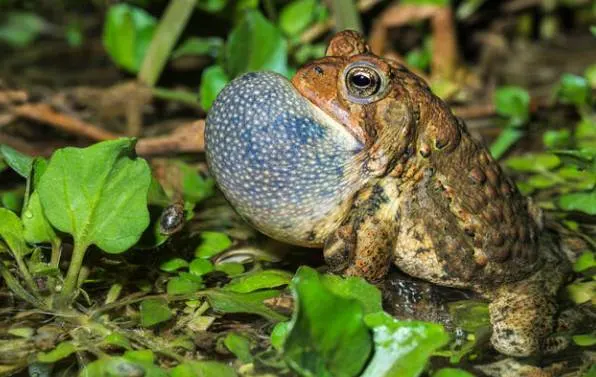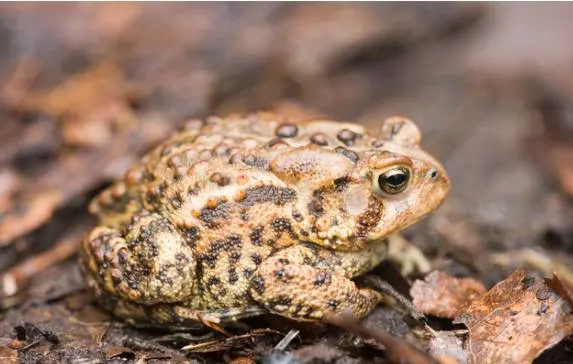The American Toad (Anaxyrus americanus) is a fascinating amphibian commonly found throughout the eastern United States and Canada. Known for its unique adaptations and behaviors, the American Toad is a vital part of many ecosystems. Here, we delve into its scientific classification, physical characteristics, behavior, diet, and more.
Table of Contents
Scientific Classification
- Kingdom: Animalia
- Phylum: Chordata
- Class: Amphibia
- Order: Anura
- Family: Bufonidae
- Genus: Anaxyrus
- Species: A. americanus

Conservation Status
The American Toad is listed as Least Concern due to its wide distribution and stable population numbers. It thrives in a variety of habitats, from forests to suburban backyards.
Physical Characteristics
American Toads have stout bodies with short legs and are covered in warts that secrete a milky, poisonous fluid, deterring predators. Their skin varies in color from brown to gray, olive, and light brown, often changing with humidity and temperature. They have permeable skin, four toes on each front leg, and five toes on each hind leg. The males typically have darker throats compared to the lighter throats of females.
Behavior and Habitat
These toads are primarily nocturnal and prefer humid, warm climates. They are solitary creatures, except during the breeding season, which occurs in late spring and early summer. American Toads can be found in semi-permanent pools, ponds, and areas with dense vegetation. During the day, they hide under rocks or logs, and in winter, they dig into the soil to hibernate.
Diet
Adult American Toads are carnivorous, feeding on a variety of insects and invertebrates, including slugs, beetles, snails, and earthworms. They capture prey using their sticky tongues and front legs. In contrast, toad tadpoles are herbivorous, consuming aquatic vegetation and algae.
Reproduction and Life Cycle
Breeding season for American Toads begins in March or April and can extend to July. Males arrive at breeding sites first and call to attract females. Females lay between 4,000 to 8,000 eggs in water, which hatch into tadpoles within 3 to 12 days. These tadpoles develop into adult toads over 40 to 70 days and reach sexual maturity at 2 to 3 years. While many young toads do not survive their first year in the wild, those in protected environments can live for over 10 years.

7 Interesting Facts
- Poisonous Defense: The warty skin of American Toads produces a milky poison that can make many animals sick if ingested.
- Large Egg Laying Capacity: Females can lay up to 20,000 eggs, which hatch within a week.
- Adaptability: American Toads are highly adaptable and can thrive in various environments, from forests to gardens.
- Dietary Habits: One American Toad can consume up to 1,000 insects in a single day.
- Playing Dead: American Toads can play dead to evade predators, a behavior particularly effective against those immune to their poison.
- Habitat Use: They are often found in gardens, agricultural fields, and under porches or stones during the day.
- Toxicity to Pets: The poison from American Toads can be harmful to pets if ingested.
The American Toad is an intriguing species with remarkable adaptations that ensure its survival across diverse habitats. Its role in controlling insect populations makes it a valuable asset to ecosystems. Whether encountered in the wild or in a backyard, the American Toad is a testament to the resilience and diversity of amphibian life.
- Enchi Ball Python: A Unique and Stunning Morph of Python regius - March 27, 2025
- Emerald Tree Monitor: The Enigmatic Green Guardian of the Rainforest - March 26, 2025
- The Egyptian Cobra (Naja haje): A Fascinating Serpent - March 25, 2025
